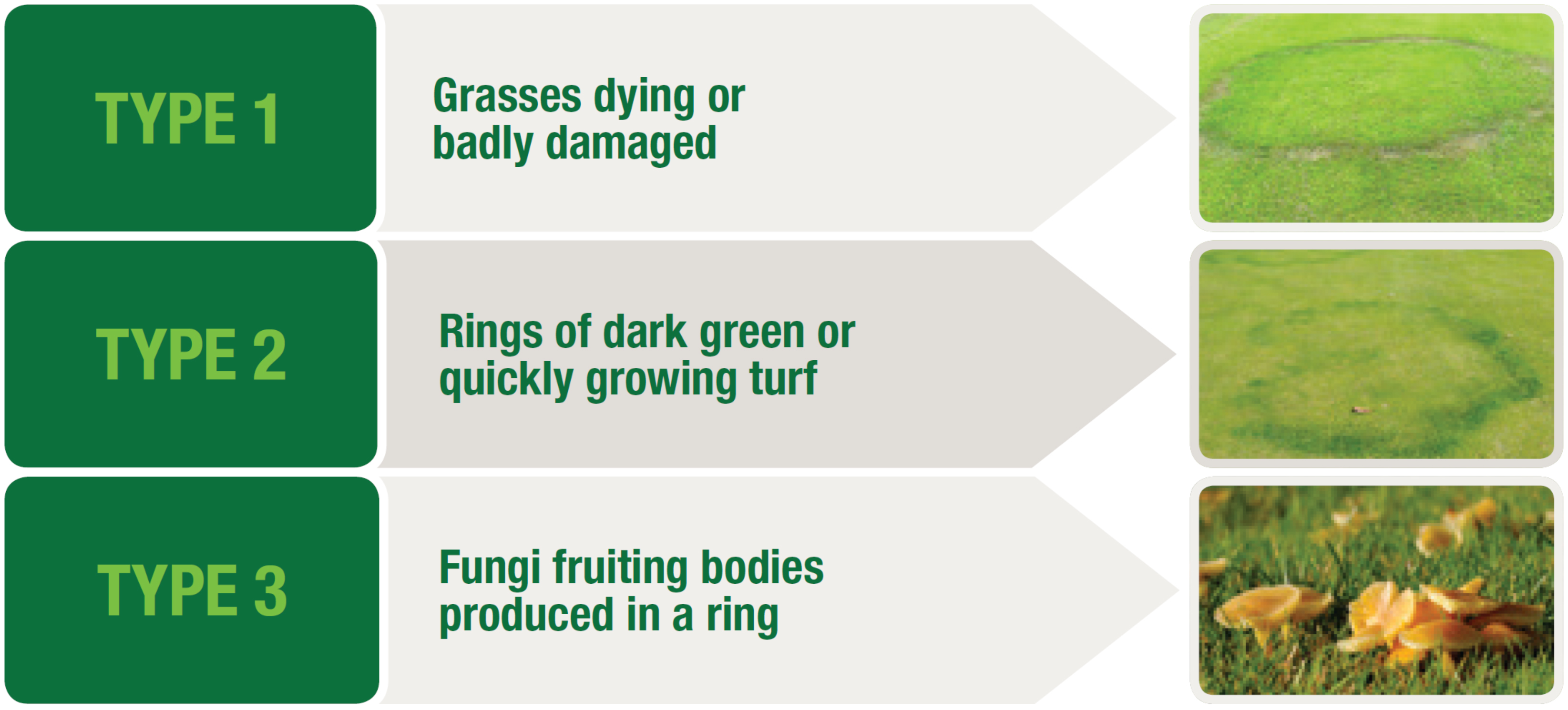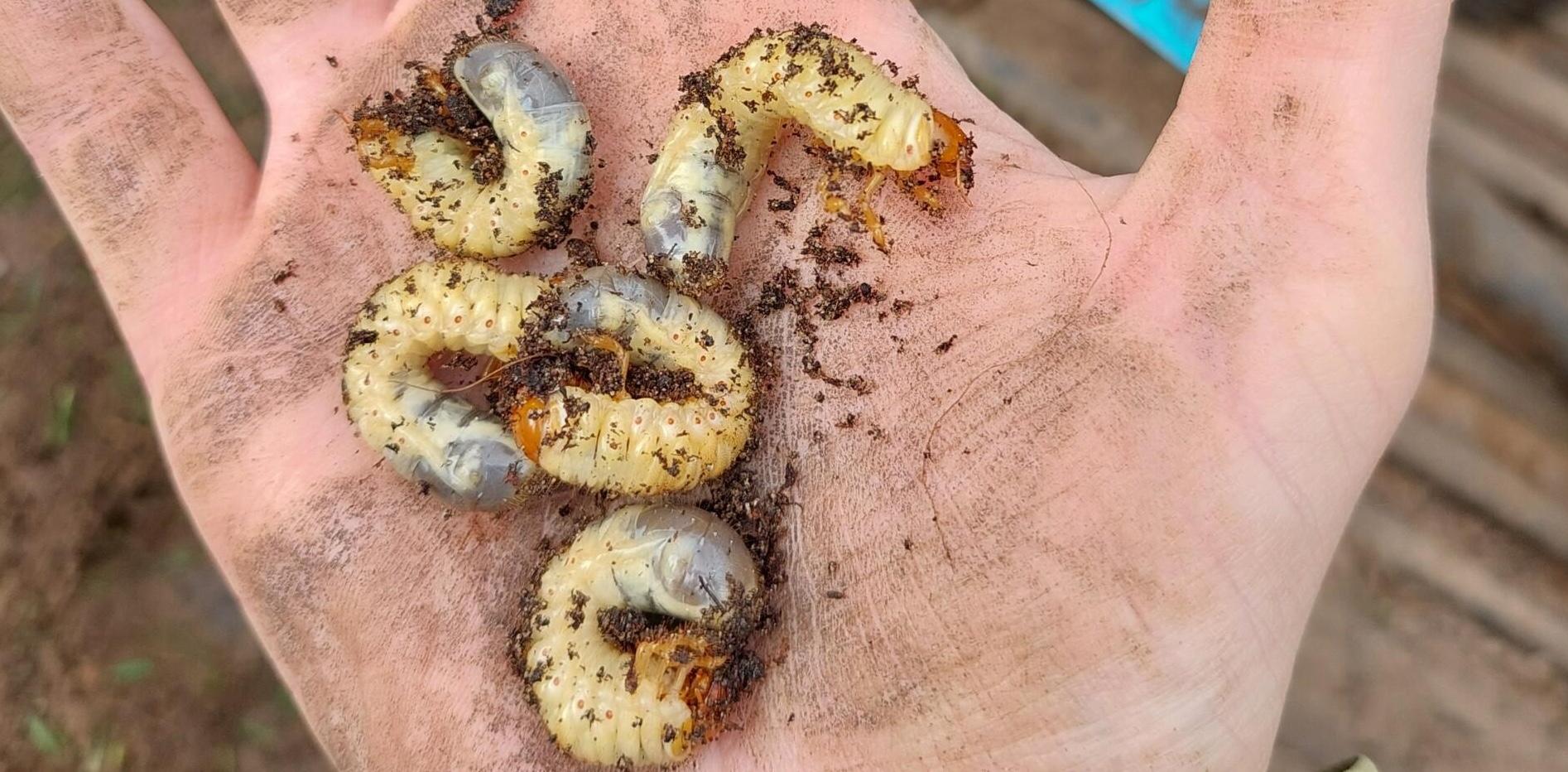I've had a few questions from our fellow bloggers over at the TurfcareBlog team about Fairy rings:
What type of fairy are there and which ones are cause the most issues for turf managers?
There are around 60 different fungal pathogens that are known to cause fairy rings and the way the display themselves in the turf can be variable dependent on the soil type and organic matter content.
They are generally referred to as:

But all pathogens are capable of displaying any of the symptoms
The scale of the impact is related to the organic matter and/or the acceptance of the visual impact. The level of damage you see is generally related to the amount of cultural work going on. The less you manage the situation the more it can get out of hand.
Why are they a issue to specific surfaces ie cricket, winter sports, golf?
The implications of fairy ring on your turf are variable. Fairy ring itself doesn't damage turf, it's how it adjusts the soil that has an impact. The two biggest impacts of fairy ring are the stimulation of growth and the hydrophobic nature of the activity.
Both can be managed but the more organic matter in the surface the trickier that management becomes.
The impact of growth stimulation and hydrophobic soils will be different in all sports surfaces and the cultural techniques that can be adopted will be different in all surfaces too.
In some situations masking green rings with nitrogen applications will be perfectly acceptable and a very simple management strategy, in others this is just not acceptable.
Hydrophobic soils can be managed effectively with good wetting agent programmes and watering practices but the nature of some sports surfaces means that drying them down is part of the process to achieve the desired playing characteristics.
Having fairy rings means that careful consideration will need to be put into each management decision – mask the symptom or achieving the best playing surface is a difficult decision.
Can the spores of fairy rings come in via external sources, topdressing materials etc?
We are surrounded by spores from numerous fungal pathogens every day and they can stay viable for a good period of time, I have read for several years.
Just like mould appears on bread from a single spore, a fairy ring can start from any spore that finds a suitable environment.
Spores are tiny and will travel in the wind unnoticed, it would take around 25,000 spores just to cover a pin head.
The below video shows how it’s no surprise that we can see these things appear anywhere, in fact I’m surprised looking at this that we don’t see more than we do.
Video link - looking at spores
What are the cultural control options for controlling fairy rings
Lets break this down:
Fairy rings don't kill turf, the soil conditions they create will cause both Hydrophobic and growth stimulation. This can be managed using:
- A strategy to reduce thatch (aeration),
- Ensure soils stay wettable (aeration and wetting agents)
- Appropriate levels of nitrogen to hide the visibility of the problem
Nothing ground breaking - good levels of nutrition, wetting agents, aeration, keep thatch levels low. This will all reduce the impact of the problem - you need to decide how critical this is to your surface.
What are the cultural control options for controlling fairy rings
The products registered in the UK with fairy ring on the label are:
Heritage WG and HeritageMaxx which both have a "QUALIFIED MINOR USE RECOMMENDATION. On the basis of limited evidence HERITAGE will reduce the effects of Type 2 Fairy Rings" statement on the label.
Fairy ring control should be looked at as a long term strategy where we look to:
- Mask the aesthetic symptoms caused by the fungi
- Manage the soil conditions created by the fungi
- Make the environment as favourable as possible to enable sound management
- Take a long term view to reduce the aggressiveness of the pathogen with fungicides.
Can you eat the mushrooms from fairy rings?
The pathogen behind the fairy ring can come from a number of sources – around 60 different fungi have been associated with Fairy ring.
I suspect some are edible and some are not. I’m no expert but I would wholeheartedly advise to NEVER TRY.
It’s just too wide a range for anyone other than an expert in the subject to advise on.

If you remove a section of one fairy ring and replace with a section from another fairy ring, can you stop the spread?
I’ve heard this and tried it. I even convinced myself I’d had success! There are so many species involved in fairy ring, there is a chance that some are highly antagonist to each other and could compete with the other to stop the process. But I suspect that is more luck than anything.
It’s quite normal to see images of Fairy rings growing and coalescing into each other, so whilst I’d certainly encourage giving it a go if your situation allows I’ll also try and manage your expectations a little and suggest that the odds of it working are very low but I do not foresee any potential downsides to trying.

What is the chance of stopping them returning long term to my turf?
Controlling fairy ring shouldn’t be seen as a quick fix. This is an ongoing process that can take years to achieve.
I’m confident it can be achieved but there are a number of factors that will influence how quickly you will achieve it.
Top Tips
Know the target – understand exactly where the problem is in the soil and target fungicide applications in that area of the soil using appropriate amount of watering in, wetting agent and aeration.

Understand what you’re seeing – the green rings you see are likely to be last years mycelium decomposing and additional nutrient release, this additional green up isn’t the active fungi, it’s the aftermath.
Any fungicide treatment will be reducing and controlling of further growth and any positive impact is unlikely to be seen until the following growing season.
Restoring the good growing conditions for grass will take work - the more damage that has been done the soil the longer the journey.
Many symptoms can be masked with nutrition or good wetting agents and watering programmes to aid re-wetting and managing the soil profile.
This is not a battle that will be won on one single front, it will take time and generally results are seen the following season.




